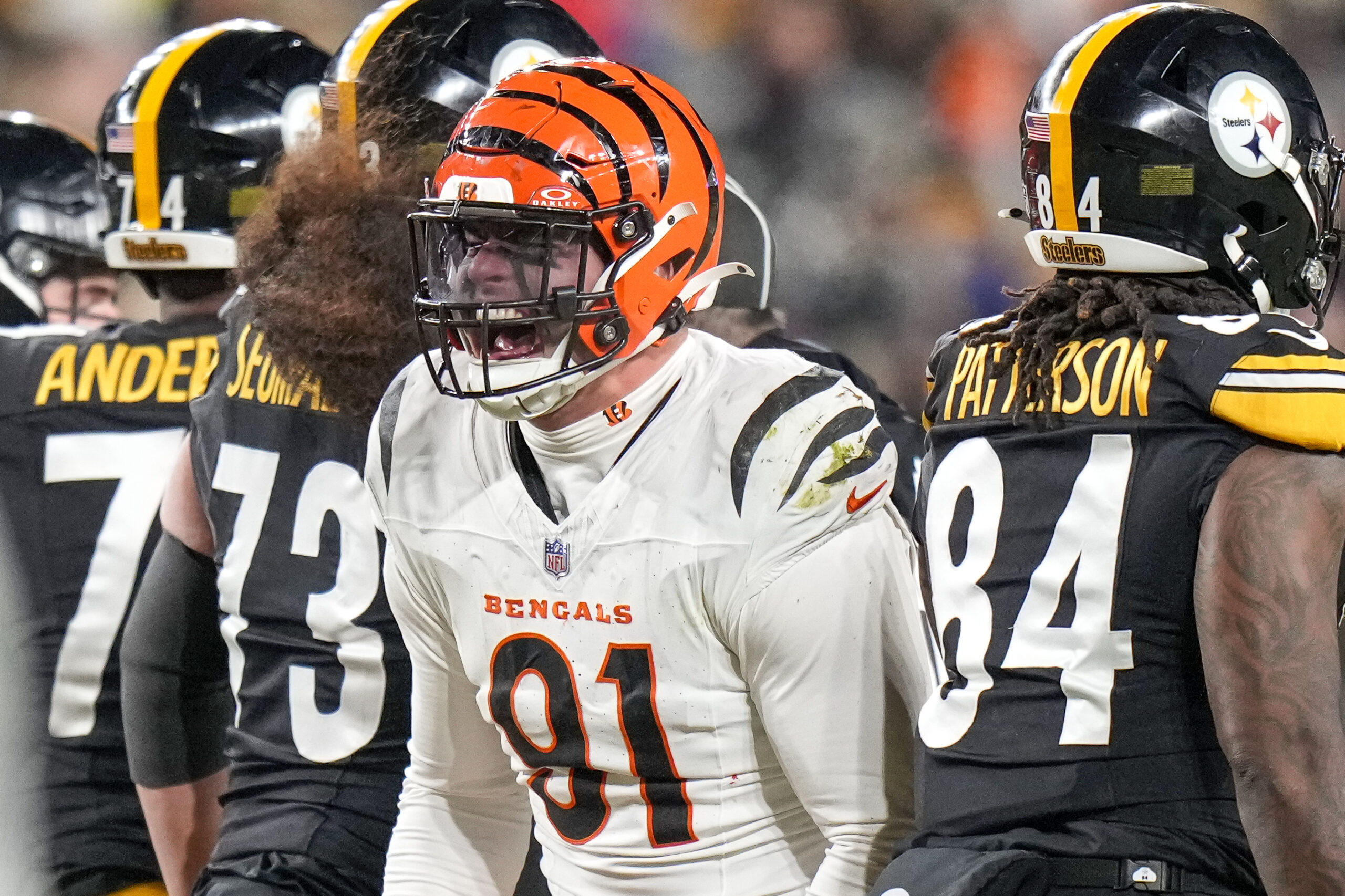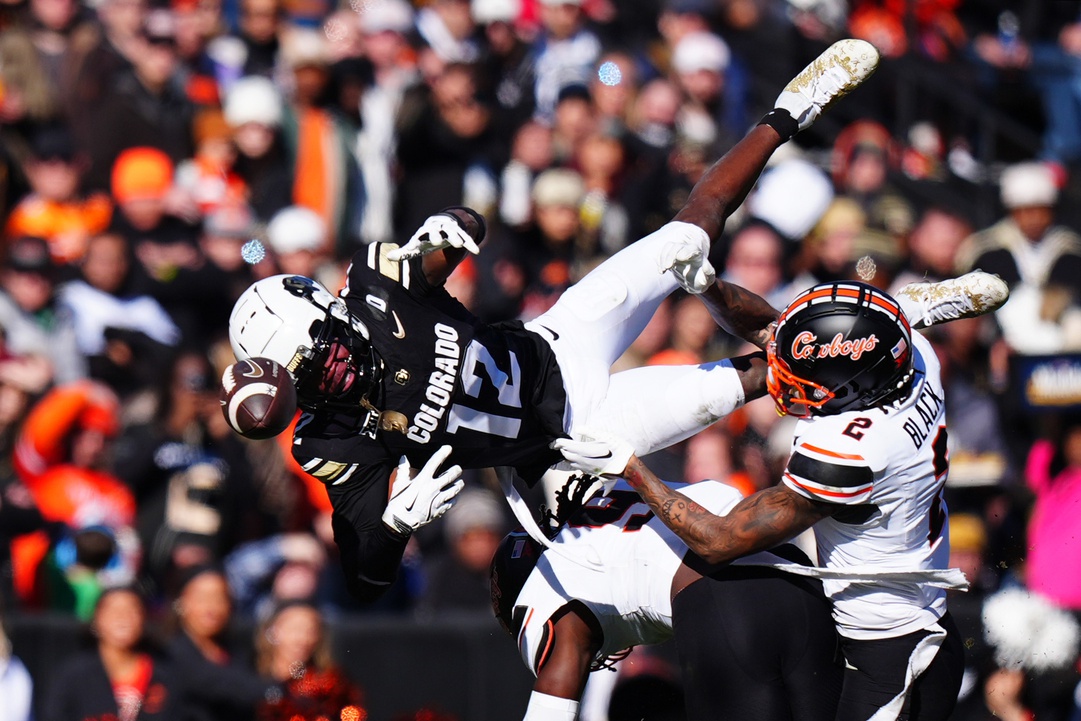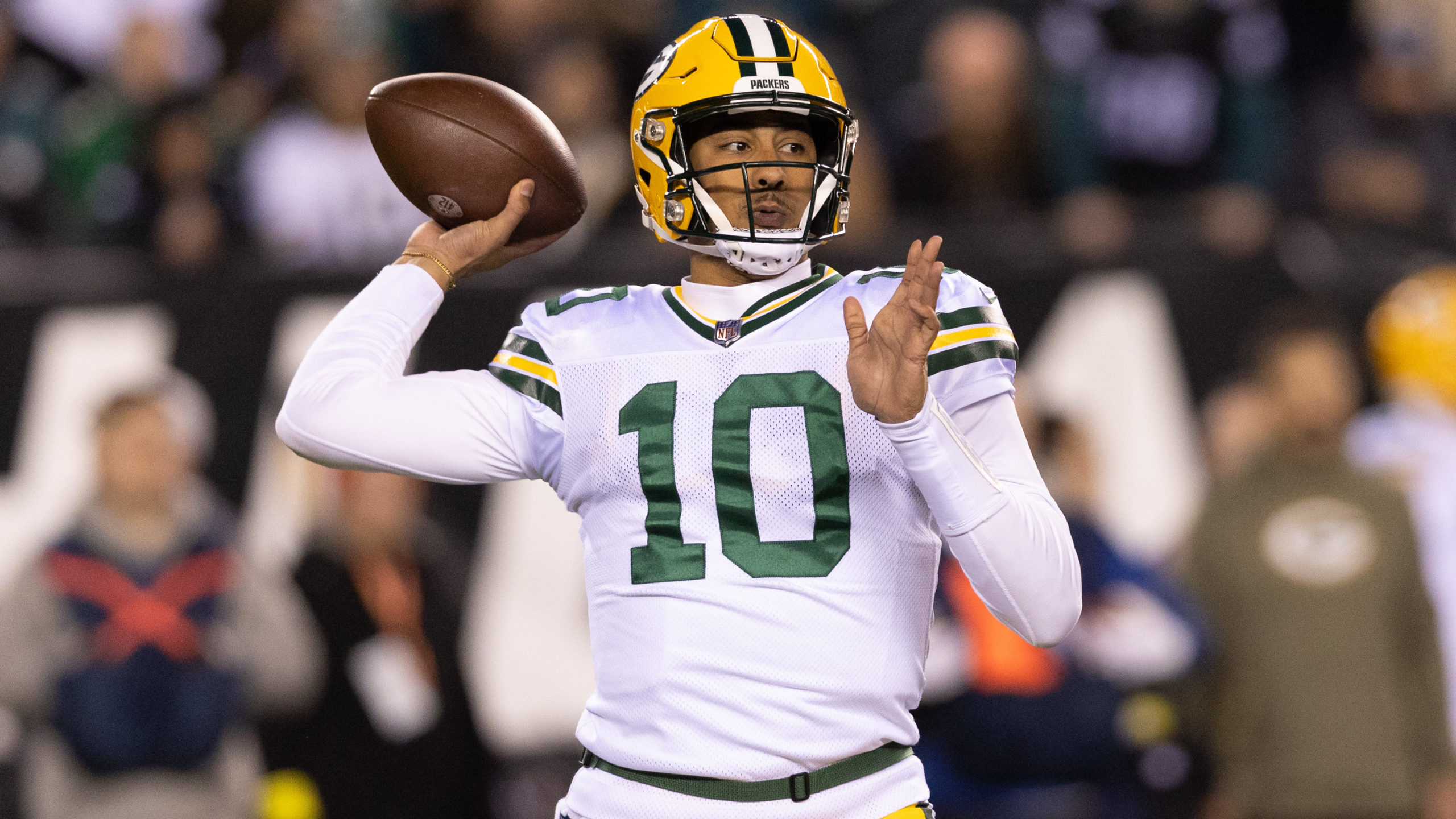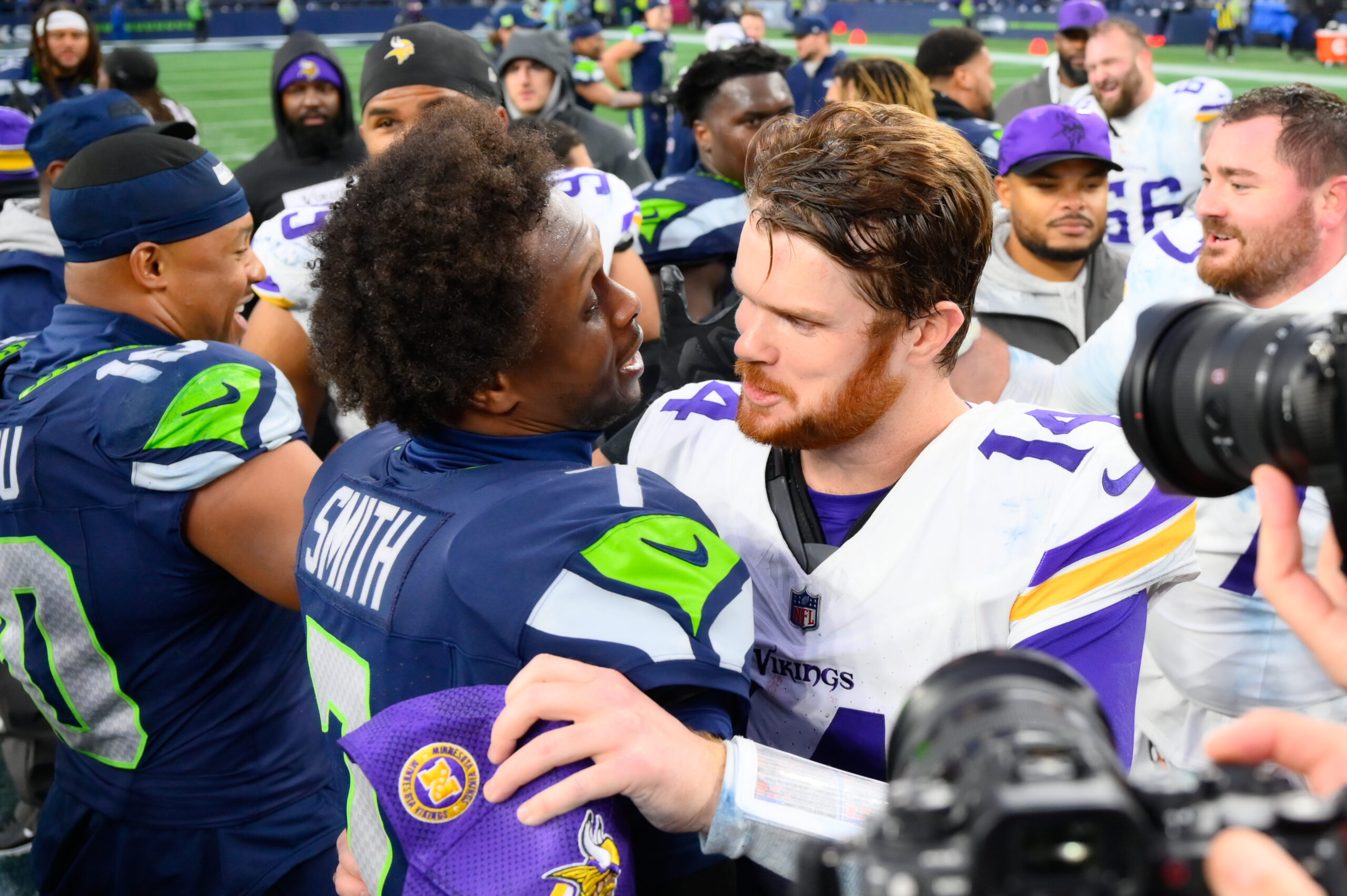NFL Analysis
7/19/24
7 min read
Jordan Love Still Has More to Prove Entering 2024 Season
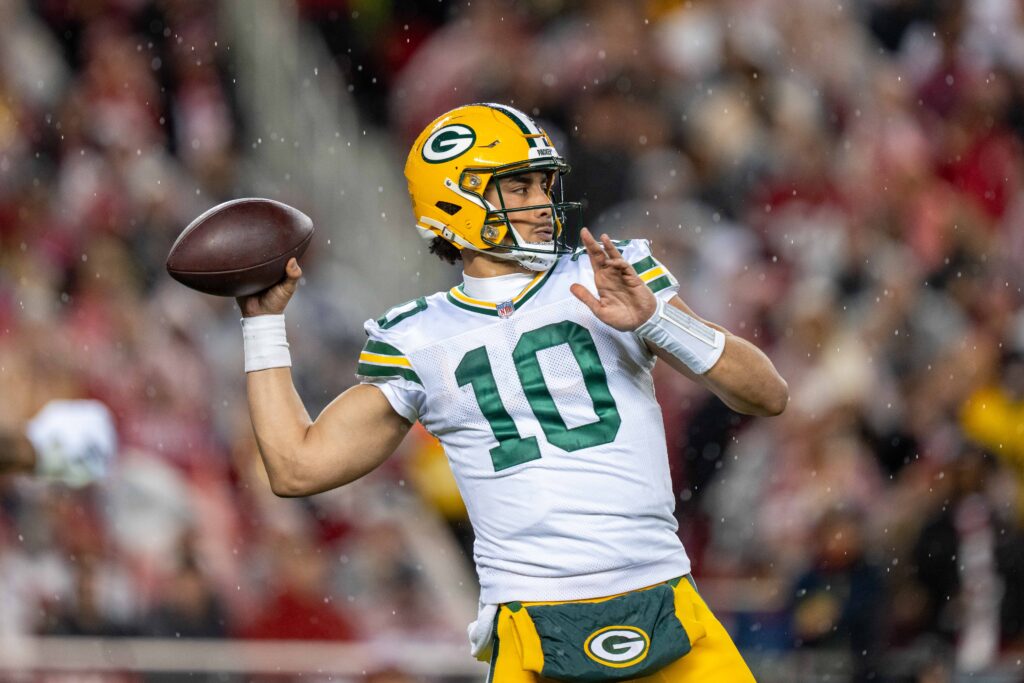
Editor's Note: After publishing, the Green Bay Packers signed Jordan Love to a four-year, $220 million extension, making him the highest-paid QB in NFL history.
It can be dangerous to bank on a second-half leap, becoming the baseline for production for the following season. Development is not linear, and one half of a season does not tell us more about the future than the other half; it tells us less than when considering the full season of play.
That brings us to Jordan Love. All the optimism for Love and the Green Bay Packers comes from an incredible half of the 2023 season, including a dominating playoff win against the Dallas Cowboys. But Love’s second half of the season was so good it bumped up his numbers for the entire season.
Love finished eighth among quarterbacks in EPA per play overall after struggling during the first half of the season. From Weeks 1-9, Love averaged -0.07 EPA per play, which ranked 18th in the NFL. From Week 10, he averaged 0.22 EPA per play, ranking third in the NFL during that stretch.

Figuring out how much of that second half of the season can carry over doesn’t just matter for the Packers in 2024; it informs the long-term impact, with Love seemingly the next quarterback in line for a contract extension.
Before the 2023 season, Love and the Packers came to a compromise. He got a two-year deal that essentially lowered the cost of his fifth-year option, which Love would be playing on for 2024, and gave him some more money upfront. With Love not seeing the field until Year 4, the Packers were protected from guaranteeing more than $20 million in the fifth year.
However, after the 2023 performance, Love will get much more than that.
Moving Around
During the first half of the season, Love and the Packers struggled to find the right groove for the offense. There was a disconnect between what the Packers had been and the best version of what the offense should look like under Love.
This came with a shift in Matt LaFleur’s playcalling and design. The Packers used more motion in the second half of the season and looked more like the Shanahan/McVay offenses where LaFleur came from rather than the Aaron Rodgers versions of the offense.
Rodgers did not like to turn his back to the defense on play-action or have an excess amount of motion because those limited the ways he could see and process the defense both pre- and post-snap. That worked for Rodgers, but once Green Bay implemented those options for Love, things opened up for the quarterback.
Per FTN, the Packers motioned on 48.5 percent of plays and 41.9 percent of dropbacks from Weeks 1-9. Then, from Weeks 10-18, that jumped to 60.4 percent overall and 54.7 percent of dropbacks.
Motion plays a different role for every offense — there are even some that motion just to motion — but the Packers were able to weaponize that pre-snap movement and constantly opened up spacing for open throws. Green Bay used the smooth route running from most of their receivers to motion out and then run in-breaking routes better than any other team in the league.
The Packers creating space on in-breakers off motion was kind of their version of the cheat motion. They don't have the pure speed to get downfield, but multiple WRs who can smoothly break these routes to the middle of the field.
Packers creating space on in-breakers off motion was kind of their version of the cheat motion. They don't have pure speed to get downfield but multiple WRs who can smoothly break these routes to middle of the field.
— Dan Pizzuta (@DanPizzuta) July 11, 2024
Won't be surprised if they spam this a bunch more in 2024. pic.twitter.com/C7HCewETnZ
That often opened up the intermediate middle of the field for Love. During the second half of the season, only Lamar Jackson had a higher EPA per play (0.63) than Love (0.58) on throws between the numbers, but Love had nearly doubled the attempts, 135 to 71.
Green Bay also used that motion to pull defenses to one side and sneak a player, often tight end Tucker Kraft, out the other.
That also worked deeper down the field.
Letting It Rip
As Love got in a rhythm, his comfort in the offense grew, and that comfort maximized his skillset.
At the start of the season, Love was throwing deep often but was trying too hard to guide those passes, which caused them to be inaccurate. LaFleur suggested Love was overthinking in the pocket. He implored the quarterback to just let it rip.
“Letting it rip” did not mean throwing deep. The most significant shift in Love’s depth of target during the season came from decreasing the number of deep shots of 20 or more air yards and increasing the rate of throws to the intermediate level, between 11-19 air yards.
During the first half of the season, Love was good to the intermediate level (0.39 EPA per play, compared to 0.37 during the second half) but threw there 16.9 percent of the time while he threw deep 15 percent of attempts. During the second half of the season, Love increased his intermediate throws to 18.8 percent and lowered those deep shots to 11.9 percent.
Being more selective in when to throw deep completely changed how effective Love was at doing so. Love completed 25.6 percent of his deep passes from Weeks 1-9, but that jumped to 47.4 percent from Weeks 10-18. Love was fourth in EPA per play on deep passes during the second half of the season, but even the three quarterbacks above him had lower volume.
Feeling the pressure
The other big shift in Love’s comfort was his ability to play against pressure. During the second half of the season, Love was blitzed more often and faced more pressure, but his control of those situations vastly improved.

Only Josh Allen (9.6 percent) had a lower pressure-to-sack rate during the second half of the season than Love.
From Week 10 on, Love led the league in EPA per play — by far — when under pressure.

This comfort against pressure manifested in the fadeaway throws Love perfected as he stepped back from defenders in his face and still had the arm strength to get the ball where it needed to go.
There was no better example of how Love could use this as a superpower than that playoff game against the Cowboys.
Building Together
Love and LaFleur got a season to determine what this offense should look like and had a full offseason to figure out how to improve it.
Sure, Love technically only had one good half-season in his fourth year in the league, but it’s difficult to look past how good that level of play was.
There will be some struggles going forward. For example, Love isn’t going to lap the field in EPA per play under pressure for an entire season, but the sack avoidance should lead to a high floor in those situations.
Love’s play improved as he gained more comfort in the offense, and that trend will only continue. His young group of receivers and tight ends offers a wide range of traits that make it nearly impossible for a defense to figure out who to focus on stopping.
Stopping Love won’t be an easy task, either.


